Raising and harvesting your own corn is extremely rewarding. You end up with a delicious, fresh, sweet and versatile vegetable. However, it can be a daunting process if you don’t the stages of growth that the plant goes through.
Understanding the steps from when it first emerges from its seed all the way through to its harvest will help you be a better gardener. It will help you understand proper growth so that you can recognize when there is a problem that may be developing.
Keep reading below to learn its entire life cycle!
Make sure you also check out our guide on growing sweet corn.
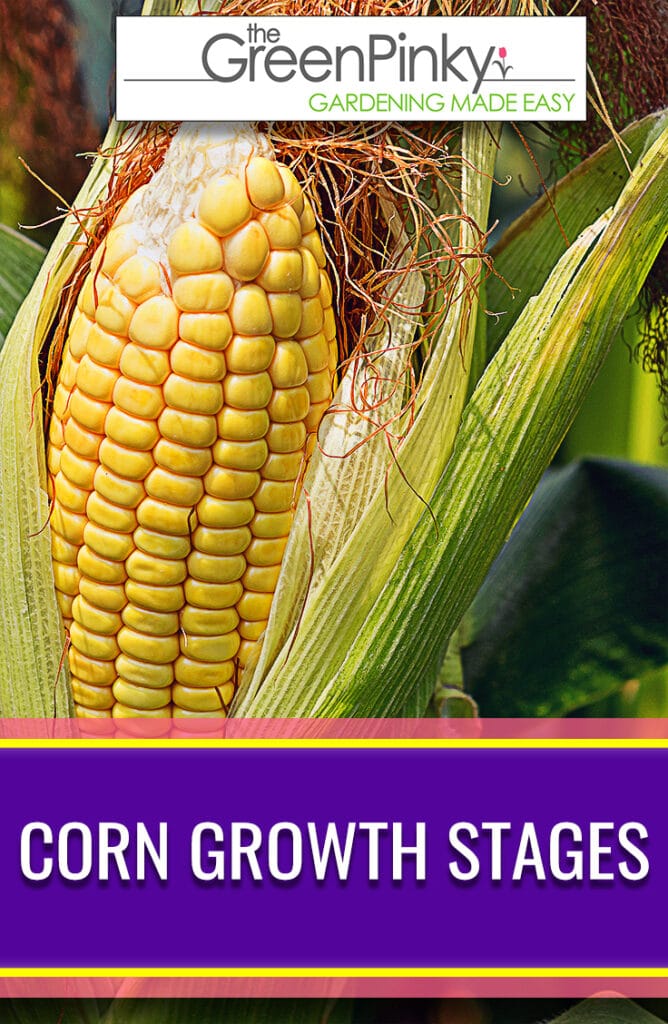
Total Growth Time
Corn is a plant that is somewhat adapted to cooler temperatures. So, planting is done as early as possible in the spring. In the deep South, they can sow corn as early as late February.
From the time corn is planted it will take between 55 and 95 days to produce mature ears of corn. If you want to get technical, it will actually require 55 to 95 growing degree days to reach maturity – these are days that reach a certain minimum threshold temperature.
There are 4 distinct stages of growing corn: planting, germination, vegetative, and reproductive. We’ll break down each of the corn growth stages in detail to prepare you for your harvest.
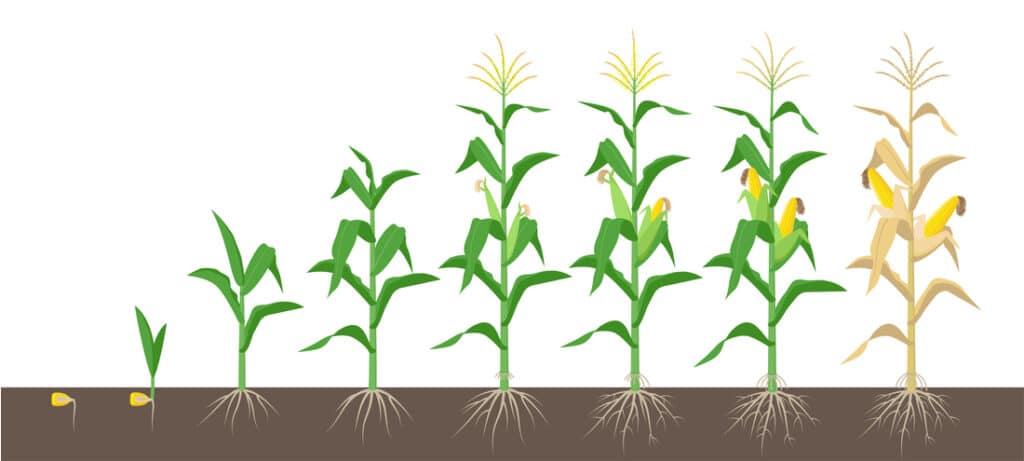
Planting
Planting is done as early as temperatures permit in late winter or early spring. Typically, corn can be planted 7 to 10 days after the final frost of the year.
It’s desirable to sow your corn as soon as the weather cooperates and the soil temperature reaches a consistent 50℉. At this temperature the likelihood of encountering pests is lessened.
Corn should be planted in rows. It’s best if your middle row has 3 more rows on either side of it. This will allow optimal pollination so that your overall yield will be larger.
When planting, sow your seeds 8 to 12 inches apart from one another to allow for lateral expansion. The roots of corn plants are relatively shallow and will only need to be sown in the 1 to 1.5 inches deep into the soil.
It is recommended that the soil for field corn is fertilized before sowing seed. Use 60 pounds of nitrogen per acre and a phosphorus and potassium ratio that is dependent on what the soil test reveals.
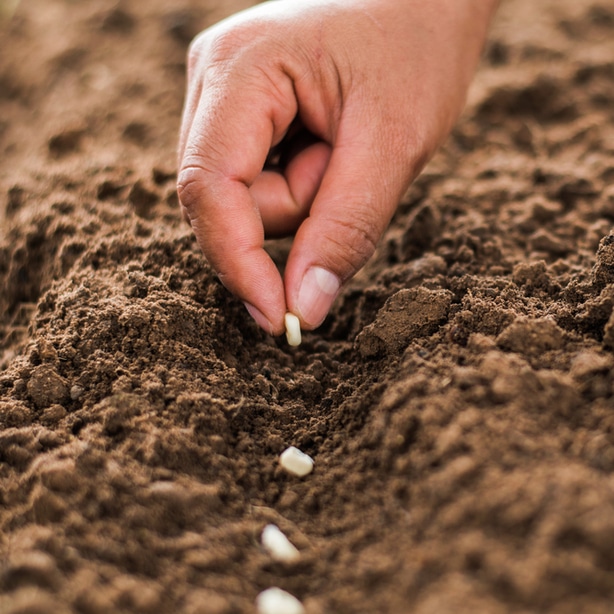
Germination
Metabolic reactions within the corn seed begin almost immediately after they are planted.
With adequate moisture and soil temperature, the water will absorb into the seed and begin the process of germination. Depending on the environmental conditions, the emergence of the radical from the seed can happen as quickly as 2 to 3 days after planting.
The radical’s emergence may take longer based on the seeds’ planting depth, surface area, and soil moisture and temperature. If these variables are not conducive to proper germination, the process can take as long as 12 to 14 days.
Vegetative Growth Stage
The vegetative growth stage is broken down into substages that are labeled VE and V1 through V18. Some of these stages can be grouped together because the overall processes are the same in different areas of the plant. Let’s take a look at what happens at different points in these vegetative growth stages.
Emergence
At this point, the nodal root system below the surface is beginning to develop. The coleoptile, or sheath protecting the plant, will reach and cause the corn’s emergence above the soil’s surface. In the emergence stage, only the coleoptiles are visible and no leaf growth has appeared on the plant.
First Full Leaf
After initial emergence, leaf development of the first leaf occurs. Full development of the first leaf is completed when its collar becomes fully visible. The collar of the leaf can be found at its base.
The first visible leaf is known as the “flag leaf.” It has a rounded end and is the only leaf on the entire plant to exhibit this trait.
The radicle is just below the surface with the mesocotyl right above it. The growing point of the plant is below the surface of the soil.
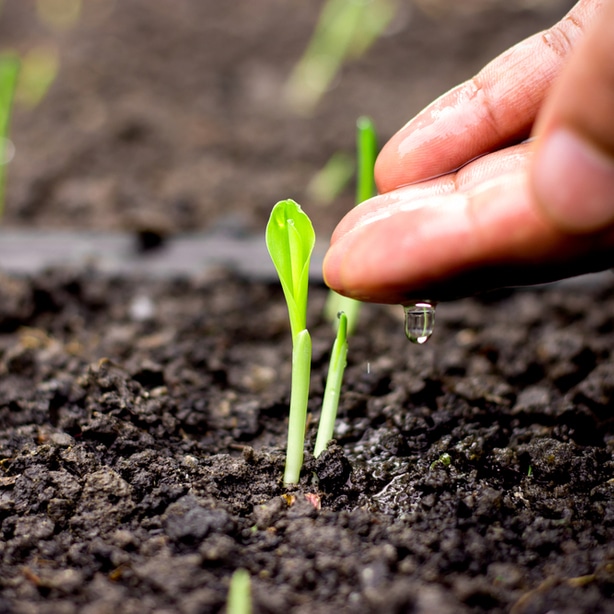
Second Full Leaf
This vegetative growth stage is defined by the full emergence of two leaves. These and each subsequent visible leaf will now have a pointed tip. To complete this stage, two fully visible leaf collars must be present on the new growth.
More Vegetative Growth
At this point onwards, the plant is relying on the process of photosynthesis to generate energy and nutrients. It no longer relies on the seed for its source of nutrients.
The growing point will move to above the surface of the soil. Degradation of the first leaf begins.

You may also be interested in our article about mint flowers and what to do with mint when growing it in your garden.
Tillers
Tillers will start to become visible. Tillers are branches that grow from the lower five to seven nodes of your plant.
These tillers are morphologically identical to the main stalk and are even capable of forming their own root systems and leaves.
Ear and Tassels
Ears (female structure) and tassels (male structures) will start to appear. You can learn more about these sexual structures in the reproductive stages where they will undergo further development.
Rapid Growth
As the corn plant continues to mature, it will move into a phase of rapid growth. The lower leaves that will not bear ears may begin to die off during this stage.
Shaping and Sexual Development
In this stage, the plant continues to grow quickly and dry matter accumulation begins to take shape. Through these points many ear shoots, which are potential ears, will be visible up and down the length of the plant. Those ear shoots that are found on the upper reaches of the plant are the ones that will become ears that can be harvested.
Tassel formations are starting to become visible all over the corn as well.
Because the accumulation of dry weight and nutrients, the moisture and nutrient needs of the plant will increase dramatically.
Anything that you can do to curtail stress to the plant during this growth stage will come to bear in the overall yield potential of your crop. Test the soil fertility. Check the moisture level. Listen to what the plant is telling you it needs.
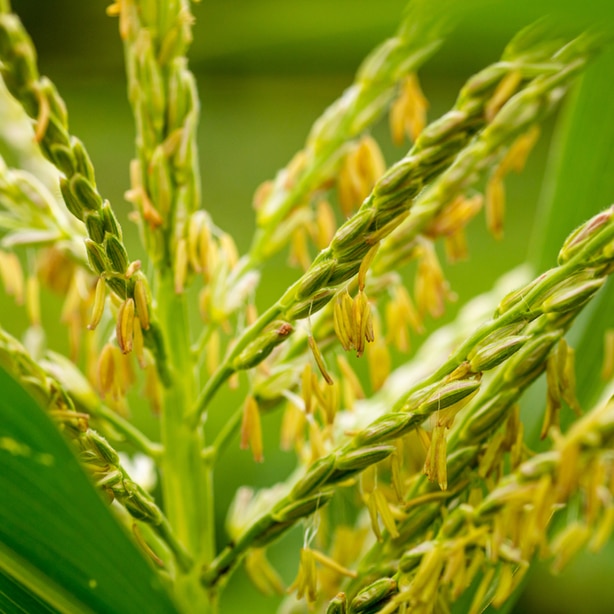
End of Leaf Production
The final vegetative stage is characterized by tassels that are fully extended but the silks have yet to emerge. Tassels are generally completely visible 2 to 3 days before the silks emergence.
At this point there will be no new vegetative growth on the plant. The leaves may grow larger through the reproductive growth stages, but they will not increase in number.
Here the plant will shed its pollen over the next week or two in preparation for the reproductive stages to begin.
Reproductive Stages
At this point, the corn has grown fully and the ears are still maturing. The total number of kernels and the rows on the ears are fully determined by this point. Instead, the plant has to focus on reproduction and continuation of the species through the development of the kernels in their husks.
Silk Emergence
The first reproductive stage is marked by the silk’s emergence from the ends of the husk. The purpose of these silks is to gather any pollen that falls from the fully matured tassels. Any pollen that the silk captures moves down it into the ovule where pollination takes place. This whole process takes about 24 to 36 hours.
The environmental conditions are paramount at this point. Stress to the plant can cause poor pollination. The biggest culprit is moisture stress. The drought dries the silk out and compromises its ability to collect the pollen falling from the tassels.
During this stage, the plant is at its most vulnerable. Ideal weather and soil conditions can greatly affect how well the corn pollinates.
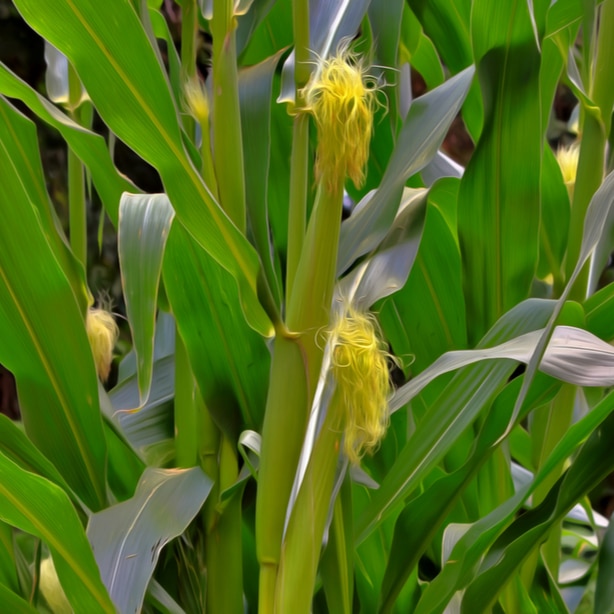
Kernel Development
As kernels emerge in this stage, they will be white in color and small. The inner fluid that fills the kernels should be clear. If you find that the fluid is discolored, it may be indicative of a disease.
At this point pollination is finished and the silks will begin to turn that familiar brown color. The water composition of the kernels at this stage stands at around 85%. This percentage will decrease as the kernels yellow and mature.

Yellowing
The kernels have started accumulating starch at this point. This accumulation will turn the clear liquid into a milky substance.
The kernels are beginning to yellow at this point on their outer surface. The cob will have grown dramatically larger than it was compared to the prior stage.
Dry matter accumulation is still increasing and any stress that accumulation might cause due to moisture and nutrient requirement increase can cause the kernels to not reach their largest potential size.

Starch Accumulation and Decrease in Moisture
This reproductive growth stage is easily marked by the appearance of dents in the kernels. These dents are due to a dramatic decrease in moisture and an increase of starch within the individual kernels.
At the outset of this stage, the moisture content of the kernels will have fallen to about 55%.
The accumulated starch within the kernels is still evolving and thickening. The former dough-like texture is now replaced by one that is considerably more defined and stiffer to the touch. The starch will begin to harden at the top of the kernel and fall back down towards the cob over time.
Stress and a late frost can affect the overall weight of the kernels at this point.
Maturity
The final reproductive growth stage is when the corn reaches its physiological maturity.
The plant has achieved its maximum amount of dry matter accumulation at this point.
The “black layer”, which is a black abscission layer where the kernels attach to the cob, has formed. The starch that was at the top of the kernels has reached the cob. The black layer signifies that the kernels have fully developed and stopped maturing.
The kernels are at their deepest yellow and have a moisture content that can range from 30% to 35%.

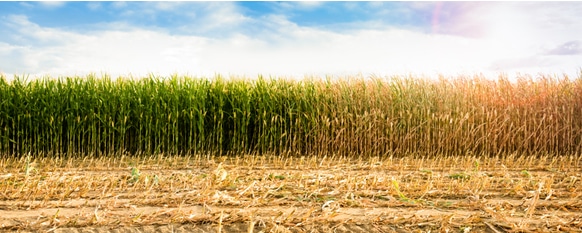
Great synopsis of corn life cycle. Thank you